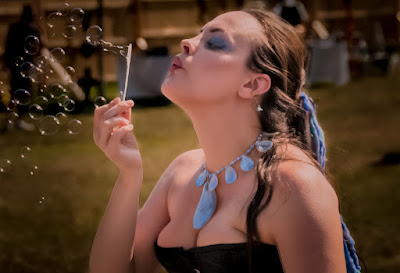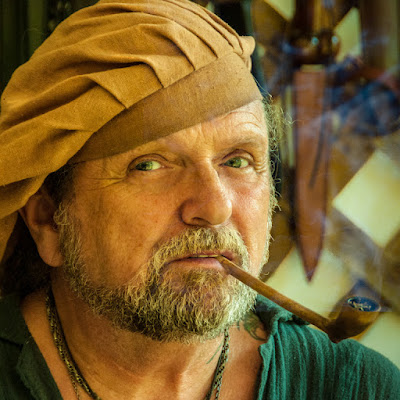Okay, guess what? The
Adobe Photoshop CS6's Adaptive Wide Angle Filter (Filter/Adaptive Wide Angle)
won. What a shock! Okay, maybe not so much. It's new in CS6, I was playing with a pano
and selected the Panorama option in the dropdown asking "what type of
image are you working on".
Today's image is a five shot panorama. The shots were taken vertically to get me the
most of a very dramatic sky. As is usual
when shooting this type of pano, the wall in front was bowed, It looked a lot like the landscape was
smiling. Made, what could be, a fairly
serious landscape shot look rather comical.
The corn field at the crest of the hill appeared to be a crewcut
hairstyle. All that would have been
needed was a couple of eyes to produce a landscape "smiley face".
The Fix:
Since the shot is made up of four images, CS6 couldn't
figure out what (single) lens was used.
Once multiple shots are combined, CS6 drops the lens info from the meta
data that goes along with a single shot.
Seems logical. The computer can't
keep track of if the combined image comes from a cohesive sets of shots (as in
today's image) or if it's made from a combination of unrelated shots. I chose to do the pano, as I have to live
with that limitation.
It's a pano! CS6's
new Adaptive Wide Angle Filter has several choices when it wants information
about what you're trying to do. The
dropdown is titled "Correction".
What you do is draw a line along the curve you'd like to
straighten. When click the dropdown and
you see "Fisheye", "Perspective", "Panorama" and "Full Spherical" to pick
from. Well I made a pano, so naturally I
picked Panorama. It turned the broad smile
into a sly grin. Not exactly what I was
looked for. That when the fighting
started. I tried anything I could think
of. I came to the conclusion that I just
didn't get it. I finally left it with
its "sly grin" and thought I was asking too much of the Adaptive Wide
Angle Filter (AWAF).
After a night's rest I thought I'd look at it again. I'm a big fan of NAPP's Photoshop Guys. One thing they all advocate is pushing
buttons. Sure, that's what it's "supposed
to do" , but what happens if you try ....
What the heck, there's four choices and I'd been fighting with the one
that seemed reasonable. After all, I
shot a pano and the AWAF had a panorama choice.
I couldn't "hurt" anything by pushing buttons. I figured "it's not a Fisheye, it's a
pano". What's the worst that could
happen if I selected Fisheye? Make the
grin back into another "big smile"?
Nope! The wall instantly became
straight as an arrow. Just what I was
fighting for.
The "Morale":
If any version of Photoshop gives you choices, try them
all. You can't screw things up too
bad. You may get the effect you were
trying for. And, if nothing else, you'll
learn a little more about Photoshop.
Read more!











